Siege of Arrah
| Siege of Arrah | |||||||
|---|---|---|---|---|---|---|---|
| Part of the Indian Rebellion of 1857 | |||||||
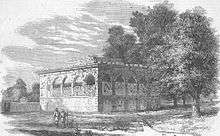 House at Arrah fortified against the Dinapore Mutineers, from the Illustrated London News (1857) - from a sketch by Major Eyre | |||||||
| |||||||
| Belligerents | |||||||
|
|
Mutinying Sepoys Kunwar Singh's forces | ||||||
| Commanders and leaders | |||||||
|
| Kunwar Singh | ||||||
| Strength | |||||||
|
Besieged Party: 68 First relief: 400 Second relief: 225 |
Mutinying Sepoys: 2500 - 3000 Kunwar Singh's forces: 8000 (Estimated) | ||||||
| Casualties and losses | |||||||
|
Besieged Party: 1 wounded First relief: About 200 killed Second relief: 2 killed | Unknown | ||||||
 Arrah Location of Arrah in modern-day Bihar | |||||||
The Siege of Arrah was the eight-day defence of a fortified outbuilding by a combination of 18 civilians and 50 members of the Bengal Military Police Battalion against 2500-3000 mutinying Bengal Native Infantry sepoys from three Regiments and an estimated 8000 men from irregular forces commanded by Kunwar Singh (also known as Koor, Coer, Koer, or Kooer, Sing), the local zamindar or chieftain. After an attempt to break the siege failed, with around 200 casualties, an unauthorised second relief effort dispersed the forces surrounding the building and the besieged party escaped.
Background
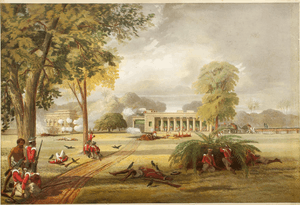
On 10 May 1857, a mutiny of Bengal Army units stationed in Meerut triggered the Indian Rebellion. The town of Arrah, headquarters of what was then Shahabad District, had a population at the time which consisted largely of Bengal Native Infantry sepoys, British and European employees of the East India Company and East Indian Railway Company, and their respective families. In addition, there was a local police force and a jail holding between 400 and 500 inmates, with 150 armed prison guards.[1][2][3] Stationed in Dinapore, 25 miles (40 km) away, were three regiments of Bengal Native Infantry - the 7th, 8th and 40th Regiments. They had been entirely recruited from Shahabad District and were loyal to the local zamindar (chieftain or landlord) Kunwar Singh.[4] The European population of Arrah expected them to mutiny at any moment and head to Delhi - the path between Dinapore and Delhi taking them straight through Arrah.[5]
On 8 June, a letter was received from William Tayler, the commissioner of Patna District by Mr. Littledale, a Judge working in Arrah, warning him that an outbreak of mutiny from the Bengal Native Infantry units in Dinapore was to be expected.[6] The European population in Arrah spent that night at Littledale's house, and the following morning a meeting was held at the house of Herwald Wake, the magistrate of Shahabad District. During this meeting it was decided that the European women and children were to be sent by boat to Dinapore, escorted by armed members of the European male population, where they would be taken into the care of the 10th Regiment of Foot - this decision was acted upon the same day.[7] At the same meeting, discussion took place about the next steps that should be taken. The East India Company civil servants stated that they did not intend to abandon the town and they would remain. All but two of the remaining European male residents of Arrah who were not civil servants or Government employees decided to leave for the relative safety of Dinapore by boat or on horseback and did so that same day.[8] This reduced the European male population of Arrah to eight,[8] rising to sixteen over the next few weeks as men arrived in the town from the surrounding area.[9] The defence of the town was augmented on 11 June when a party of 57 sepoys and sowars from the Bengal Military Police Battalion, known as Rattray's Sikhs (now the 3rd Battalion of the Sikh Regiment, Indian Army), arrived, sent from Dinapore on the orders of William Tayler and placed under the command of Herwald Wake.[10]
Following a suggestion from Herwald Wake, Richard Vicars Boyle (District Engineer with the East Indian Railway Company) began to fortify his two-storey, 50-by-50-foot (15 by 15 m) outbuilding (originally intended as a billiard room) and completed his work by 17 June.[10] The arches of the verandah were filled in with bricks without mortar, leaving small holes in the walls for defenders to shoot through. Gaps between pillars on the second storey were filled with bricks and sandbags. Boyle stored food, water, wine and beer in the building in anticipation of unrest in the town.[11] Although it was suggested that the civil servants should immediately move their headquarters to Boyle's building, the suggestion was dismissed due to objections to its location, the close proximity of trees, outbuildings and other houses and the possibility that abandoning their current headquarters would lead to disorder in the town.[12] Throughout June and July, news arrived in Arrah about the widespread rebellion throughout the Bengal Presidency and there were rumours that outbreaks would take place within Shahabad District imminently, leading to the decision by the civil servants to mount nightly armed patrols.[13] On 17 July, an anonymous note was found on a table in Littledale's house saying that a mutiny of sepoys was "certain to take place" on 25 July; according to the note, Kunwar Singh was directly involved.[14] On 22 July news arrived concerning the massacres that had taken place during the Siege of Cawnpore and then on 25 July a letter arrived from Dinapore by express post, stating: "A revolt among the native troops is expected to occur this day. Stand prepared accordingly."[15]
Battle
The Siege

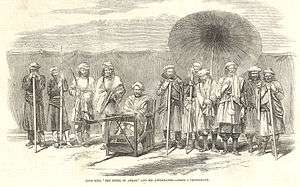
25 miles (40 km) east of Arrah, the 7th, 8th and 40th Regiments of Bengal Native Infantry were stationed in Dinapore. Discussions had taken place about disarming the units, and Governor-General Lord Canning delegated responsibility for the decision to General Lloyd. Instead of disarming the regiments, on the morning of 25 July Lloyd ordered the sepoys to hand in their percussion caps at 4pm that day. The 7th and 8th Regiments refused and fired on their officers. The 10th and 37th Regiment of Foot, also stationed in Dinapore, then opened fire on the mutineers. The 40th Regiment of Bengal Native Infantry, who had begun to comply with Lloyd's order, were also fired on in the confusion. All three regiments of Bengal Native Infantry then left Dinapore heading toward Arrah. At the outbreak of the disturbance, Lloyd could not be located; by the time he was found aboard a river steamboat and orders were given to apprehend the mutineers, they were too far away to be caught.[16] Lloyd, believing that his forces should remain in place to defend Dinapore, refused to order the pursuit of the mutineers.[17]
On the evening of 25 July, information arrived at Arrah that a disturbance was to be expected in the district. Herwald Wake had been told by a railway engineer stationed nearby that the boats used to cross the Son River would be destroyed; when Wake was informed on the morning of the 26th that the mutineers were crossing the river, he realised that the boats had in fact not been destroyed as promised.[18] Wake, who had no information about the number of mutinying sepoys and other forces approaching Arrah, noted that the local police force had disappeared and he decided not to abandon the town. Eighteen civilians and fifty members of the Bengal Military Police Battalion moved into Richard Boyle's fortified building and bricked themselves up inside.[19] The building had stores of food, drink and ammunition (with gunpowder and lead to make more if required), entrenching tools and weapons the men had brought with them. The supplies were thought to be sufficient for a few days and, since they expected the mutineers to be followed by pursuing forces, the men anticipated a brief siege of no more than 48 hours.[20] On the morning of 27 July the mutineers, joined by Kunwar Singh and his forces, arrived in Arrah. They released the prisoners from the jail and, joined by its guards, looted the treasury of 85,000 rupees. The mutineers and rebels (including the prison guards) then surrounded the house with drums and bugles playing, arranged themselves into formation and charged. When the mutineers were within 100 yards the men inside opened fire, killing eighteen of the mutineers instantly and forcing the rest to stop their charge and take shelter behind the surrounding trees and buildings.[21]
Over the following seven days the besieged party faced constant musket fire, with fire from two artillery pieces after 28 July. Although an attempt was made to drive the men out of the house by making a large fire of furniture and chilli peppers, a last-minute shift in wind direction blew the smoke away from the house. Every evening, a voice loudly invited the Sikh sepoys in the house to slaughter the Europeans and join the mutineers, offering them 500 rupees each; it was met at first with sarcasm, and later by gunfire from the building.[21] When the party began to run out of water, sepoys sneaked out of the building during the night, stole tools from their opponents and dug an 18-foot (5.5 m)-deep well in about 12 hours. When food began to run out, a small group left the building in darkness and returned with three sheep.[22] The mutineers and rebel forces did not attempt another charge on the building, although its occupants expected an attack at any moment during the siege.[18]
First relief attempt

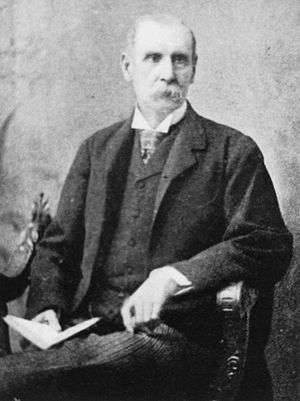
News reached Dinapore on 27 July that mutinying sepoys had attacked Arrah. General Lloyd was still unwilling to send troops to pursue the mutineers until he was persuaded to do so by pressure from magistrates (who were friends of the besieged party) and the Commissioner of Patna William Tayler.[23] A party of 200 from the 37th Regiment of Foot and 50 from the Bengal Military Police Battalion were sent by river steamer to rescue the town's civil servants. News arrived in Dinapore the following day that this steamer was aground on a sandbank, and Lloyd ordered the party recalled. Under pressure from local government officials, he changed his mind and agreed to send, using another steamer, a large force of the 10th Regiment of Foot under Lieutenant Colonel Fenwick to join up with the party on the first steamer and head to Arrah. The second steamer already had a large complement of civilian passengers and attempts to have the passengers removed met with confusion and arguments with the captain of the steamer, causing a delay of around four hours.[24] As a result, only a reduced force of about 150 (including seven civilian volunteers) was able to embark. Lieutenant Colonel Fenwick, unwilling to carry out the mission with only 150 men, delegated its command to Captain Dunbar (who worked in the paymaster's bureau[25]) and the steamer departed on 29 July at around 09:30. The second steamer met up with the first, and the combined force of about 400 then headed towards Arrah.[26]
The expedition arrived at a large island on the Ganges, and disembarked at about 4:00 pm. Finding no boats available on the island, the party took three hours to cross the river and head inland. After marching 4 miles (6 km), Captain Dunbar halted 3 miles (5 km) from Arrah for one hour to see if his supplies would catch up to him. When the supplies did not arrive he ordered the expedition to press on, despite warnings from his subordinate officers of the danger of hungry, tired men marching through unfamiliar territory at night.[25] Up to this point in the expedition, Dunbar had sent skirmishers as scouts ahead of his main body of troops; he now decided not to do so and the men advanced in a single body.[25] As the party neared Arrah, they spotted men on horseback at a distance who rode away as they approached. When the expedition was about 1 mile (2 km) from Arrah, its route passed through a thick grove of mango trees. As the party was almost through the grove, they were fired on from three sides by a force they estimated as 2,000 to 3,000 in number.[27] The party retreated with heavy casualties, including Captain Dunbar (who was killed in the initial ambush). During the retreat from Arrah, Ross Mangles and William Fraser McDonell (civilian magistrates who had volunteered to serve with Captain Dunbar's expedition) earned the Victoria Cross. The steamer carrying the expedition returned to Dinapore on 30 July, and families and friends were waiting at the dock expecting to welcome home the victorious men. When the steamer docked outside the hospital instead of at its usual berth, the spectators realised something was wrong. The expedition had lost an estimated half of its 400 men and almost every other survivor was wounded. In the words of William Tayler: "The scene that ensued was heart-rending, the soldiers' wives rushed down, screaming, to the edge of the water, beating their breasts and tearing their hair, despondency and despair were depicted on every countenance."[28]
During the evening of 29 July the besieged party in Arrah heard the sound of gunfire, growing louder as the expedition approached them, then becoming more distant as the expedition retreated. A wounded member of the Bengal Military Police Battalion who was part of Captain Dunbar's force was able to avoid the mutinying sepoys surrounding Boyle's building. Pulled up with a rope into the building, he told its occupants about the night's events.[29]
Second attempt

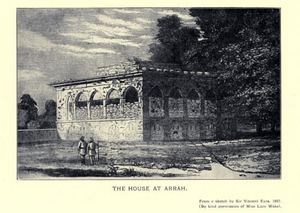
Major Vincent Eyre, a Bengal Artillery officer in command of the East India Company's Number 1 Company, 4th Bengal Foot Artillery (now 58 (Eyre's) Battery, 12th Regiment Royal Artillery, British Army), then stationed in Buxar, was under orders to head to Cawnpore with his battery. He had heard news of the situation in Arrah and, unaware of any relief expedition, decided on his own to collect troops to reinforce the expedition he believed would take place. Finding no troops available at Buxar, Eyre went to Ghazipur and was able to attach 25 men from the 78th (Highlanders) Regiment of Foot to his party. Upon returning to Buxar, Eyre found that 154 men from the 5th Regiment of Foot had arrived in his absence and he convinced their commander, Captain L'Estrange, to join him with the understanding that Eyre bore full responsibility. At this point, Eyre felt so confident of victory that he dismissed the men from the 78th Foot and went ahead without them. Unable to locate horses to move his battery's guns, Eyre used bullocks (neutered bulls) instead and was able to procure two elephants to move the party's baggage.[30] After assembling a force of 225 men (including civilian volunteers), Eyre wrote to General Lloyd at Dinapore informing him of his intentions and requesting reinforcements. On 30 July, at about 4:00 pm, Eyre's expedition started for Arrah.[31]
Lloyd's reply, informing Eyre of the failure of the first relief attempt and ordering him not to commence his mission, or to return to Buxar to await further orders if he had already started, arrived while the party was already en route. Eyre disregarded Lloyd's order and continued towards Arrah.[32] On 2 August, still over 6 miles (10 km) from his objective, Eyre's force encountered an estimated 2,000 to 2,500 mutinying sepoys accompanied by Kunwar Singh's forces - including Kunwar Singh himself - in an attempt to intercept him.[18] Greatly outnumbered, Eyre's party became surrounded. He then ordered the infantry to charge with bayonets and the artillery to fire on the mutineers. This caused the mutinying sepoys to retreat, with an estimated 600 casualties.[33] Eyre's party, with only two killed,[18] then continued towards Arrah. Blocked by a river, they built a bridge which they completed the following day. When they crossed the river the morning of 3 August, a villager gave them a letter from Herwald Wake telling them that the besieged men had heard about their approach and "We are all well".[33]
Throughout the day of 2 August the besieged party heard distant cannon fire and saw people in the town hurriedly loading carts with their belongings.[34] The constant fire from muskets on the building lessened and finally ceased; it was approached by two men, who told the occupants that the besiegers were defeated and a relief force was expected to arrive in Arrah the following day.[35] The occupants were sceptical, despite visual evidence, and sent out a small party at midnight to reconnoitre the area - they found no sign of the mutineers and brought in a large quantity of gunpowder and the mutineers' two artillery pieces. They then sent a party under cover of darkness to destroy a number of outhouses which the mutineers had been using as cover. This party discovered a mine dug directly under the foundations of the building by the mutineers, charged and ready to be primed - the charge was destroyed. The following morning at about 7:00, two members of Major Eyre's expedition arrived at the house and the siege was officially broken.[36] Eyre, In his official report, wrote that Wake's defence of the building "seems to have been almost miraculous". About the outcome of the first relief attempt, he wrote: "I venture to affirm, confidently, that no such disaster would have been likely to occur, had that detachment advanced less precipitately, so as to have given full time for my force to approach direct from the opposite side, for the rebels would then have been hemmed in between the two opposing forces".[18]
Aftermath
Eyre, after receiving reinforcements, pursued Kunwar Singh's forces to his palace in Jagdispur; many civilians who were besieged in Arrah volunteered to serve with him. Although Eyre routed Singh's forces and occupied the palace by 12 August, Singh had fled. Eyre destroyed the palace, Singh's brothers' houses and a Brahmin temple (and was officially censured for doing so).[37]
According to Herwald Wake's official report about the siege, "Nothing but cowardice, want of unanimity, and only the ignorance of our enemies, prevented our fortification being brought down about our ears". Patna District Commissioner William Tayler wrote, "The conduct of the garrison is most creditable, and the gallantry and fidelity of the Sikhs beyond all praise."[18]
Awards
For their actions during the siege, Herwald Wake was made a Companion of the Order of the Bath[38] and Richard Vicars Boyle was made a Companion of the Order of the Star of India[39] after the 1861 creation of the order.[40] A few days after the relief of Arrah, the 50 besieged members of the Bengal Military Police Battalion received a gratuity of 12 months' pay as a reward for their loyalty and Hooken Singh, their Jemadar, was promoted to Subadar upon Wake's recommendation.[18] For its actions in Arrah the Bengal Military Police Battalion received the Defence of Arrah battle honour.[41] For his actions, Major Eyre was recommended for a Victoria Cross although this was not awarded.[42]
Present day
The besieged building still stands on the grounds of Maharaja College,[43] and there are plans to make it a tourist attraction.[44]
References
- ↑ Halls, John James (1860). Two months in Arrah in 1857. London: Longman, Green, Longman and Roberts. pp. 9, 10.
- ↑ Trevelyan, George Otto (1864). Competition Wallah. London: Macmillan & Company. p. 85.
- ↑ Sieveking, Isabel Giberne (1910). A turning point in the Indian mutiny. London: D. Nutt. p. 19.
- ↑ Trevelyan 1864, p. 82.
- ↑ Halls 1860, p. 10.
- ↑ Sieveking 1910, p. 21.
- ↑ Sieveking 1910, p. 22.
- 1 2 Halls 1860, p. 14.
- ↑ Boyle, Robert Vicars (1858). Indian Mutiny. Brief Narrative of the Defence of the Arrah Garrison. London: W. Thacker & Co. p. 7.
- 1 2 Sieveking 1910, p. 25.
- ↑ Boyle 1858, p. 8.
- ↑ Halls 1860, p. 26.
- ↑ Halls 1860, pp. 28-31.
- ↑ Halls 1860, p. 33.
- ↑ Halls 1860, p. 34.
- ↑ Trevelyan 1864, p. 84.
- ↑ Sieveking 1910, p. 50.
- 1 2 3 4 5 6 7 "Supplement to The London Gazette, October 13, 1857" (22050). 13 October 1857. pp. 3418–3422. Retrieved 18 July 2016.
- ↑ Sieveking 1910, p. 28.
- ↑ Sieveking 1910, p. 46.
- 1 2 Trevelyan 1864, p. 87.
- ↑ Sieveking 1910, p. 44.
- ↑ Tayler, William (1858). The Patna crisis; or, Three months at Patna, during the insurrection of 1857. London: J. Nisbet. p. 78.
- ↑ Tayler 1858, pp. 79-81.
- 1 2 3 Trevelyan 1864, p. 94.
- ↑ Sieveking 1910, pp. 51-53.
- ↑ Sieveking 1910, p. 58.
- ↑ Tayler 1858, p. 83.
- ↑ Halls 1860, pp. 46-48.
- ↑ Sieveking 1910, p. 83.
- ↑ Sieveking 1910, p. 81.
- ↑ Sieveking 1910, pp. 74.
- 1 2 Sieveking 1910, p. 90.
- ↑ Trevelyan 1864, p. 109.
- ↑ Halls 1860, pp. 52-53.
- ↑ Halls 1860, p. 54.
- ↑ "The London Gazette, December 4, 1857" (22069). 4 December 1857. pp. 4262–4264. Retrieved 18 July 2016.
- ↑ "The London Gazette, May 18, 1860" (22387). 18 May 1860. p. 1916. Retrieved 20 July 2016.
- ↑ "The London Gazette, June 4, 1869" (23504). 4 June 1869. pp. 3182–3183. Retrieved 20 July 2016.
- ↑ "The Montreal Gazette". 21 January 1908. Retrieved 20 July 2016.
- ↑ Singh, Sarbans (1993). Battle Honours of the Indian Army 1757 – 1971. New Delhi: Vision Books. ISBN 81-7094-115-6.
- ↑ "Obituary - The Late Sir Vincent Eyre". The Tablet: p.542. 1 October 1881. Retrieved 1 December 2016.
- ↑ "Our College - Maharaja College Ara". maharajacollegeara.com. Retrieved 20 July 2016.
- ↑ "CJ's chance visit helps breathe life into Ara House". Deccan Herald. Retrieved 20 July 2016.